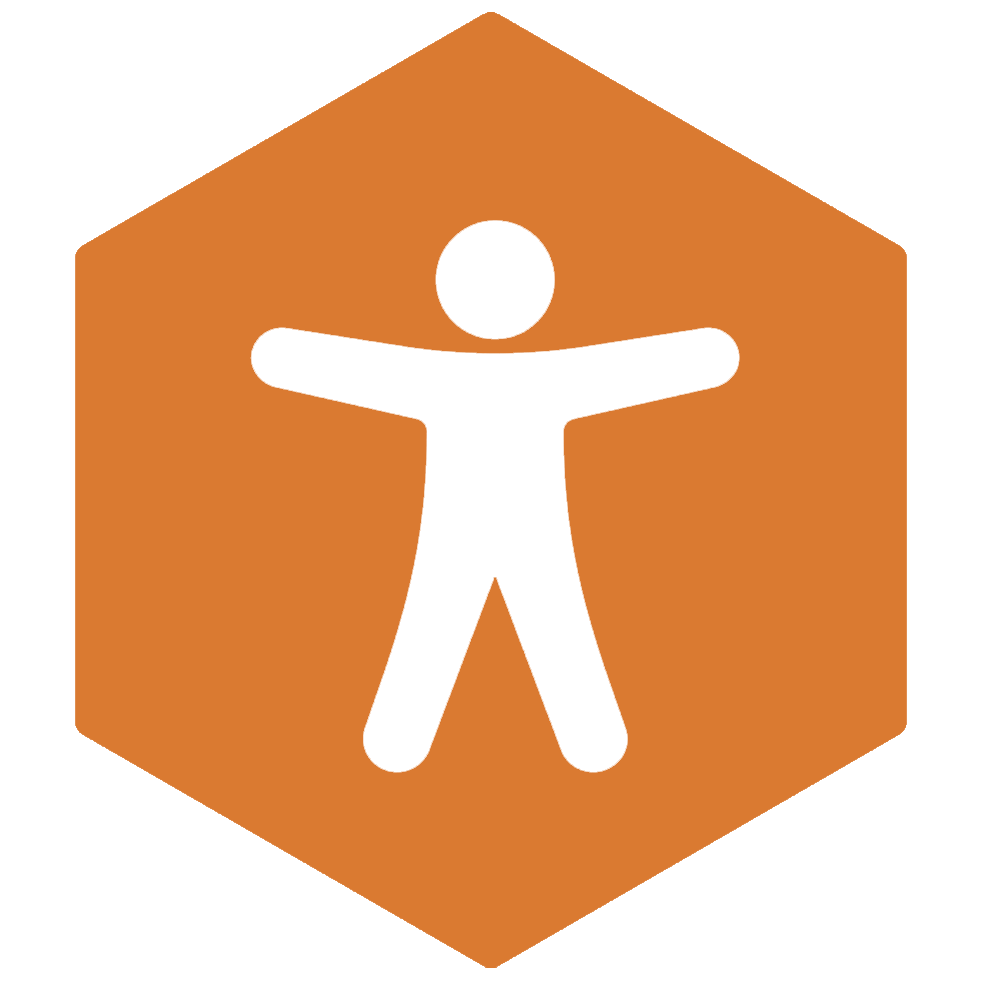Although people are beginning to understand the need to make their digital platforms accessible, there are still many myths (or excuses) that circulate surrounding why they aren’t making this the case. This blog will debunk these common misunderstandings.

1. “Adding an accessibility toolbar will make my website accessible”

This is one of the big accessibility myths and is completely false. If you’re thinking about building an accessible website, or you’re looking for best inclusive practices, there’s a strong likelihood that you’ve come across the use of accessibility toolbars, also known as ‘accessibility overlays’. These may seem like nifty tools to use; however, the reality is that if your website is built to be accessible in the first place, then most browsers already have built-in capabilities to perform these actions.
The majority of users that these plugins are intended for will already be using assistive technology, such as a screen reader or screen magnifier, to access the web in the first place. Most accessibility toolbars aren’t actually accessible anyway, due to them needing to be activated initially to use the features. In turn, rendering them completely pointless.
2. “Accessible websites are ugly and boring”

This accessibility myth is definitely false! Any website, being accessible or not, can be just that if designed and built by the wrong agency.
Developing a website’s coding to be accessible has no impact on the visual appearance of a platform. In fact it’s quite the opposite outcome. If a website is designed with accessibility at the forefront, it has a clear and consistent structure, which enhances the experience for site visitors by streamlining a fluent user journey and offering a more user-friendly and engaging platform all round.
3. “Disabled users don’t visit our website”

With 1 in 5 people having some form of disability, there is a strong likelihood that you have an abundance of users visiting your platform who are requiring it to be accessible. It isn’t only users of assistive technology who need your website to be inclusive though, the chances are that everyone will need additional support online at some point in their lives. This could be due to declining eyesight or dexterity as we age, a temporary disability such as an injury, or situational limitations like being in busy surroundings and relying on a video having captions. Accessible websites benefit everyone.
You’ll be pleased to learn that there are many benefits of having an accessible website, for both your platform’s visitors and for your organisation itself.
4. “I’ve been told my website is 100% accessible”

There is no such thing as a website being 100% accessible. In a world where technology advances rapidly, the accessibility sphere is always changing and improving. Everyone has different unique needs and it would be impossible to cater for absolutely everyone. The best we can do is strive to make platforms as accessible as we can for as many people as possible. Of course, listening to any feedback along the way from website visitors themselves to make adjustments to enhance their user experience and improve the usability of the platform.
5. “Automated audit scans are enough to check the accessibility of my website”

This is definitely not the case. Although performing automated scans can seek out basic accessibility errors, such as missing alt text or broken links, software alone cannot assess the usability or user experience itself. This is why manual reviews are of paramount importance when testing accessibility.
Above performing manual tests and assessing the website’s codebase, it’s also advisable to execute tests using assistive technology devices and software. This is why our team works in partnership with a pan-disabled team at Shaw Trust Accessibility Services to ensure that every website that we produce is accessible for all.
6. “Web accessibility is expensive and time consuming”

This isn’t the case, especially if you plan accessibility into your project from the beginning. Retrofitting websites is what takes the time. When it comes to creating accessible content, though it may take slightly longer initially whilst you get into good habits; it then comes as second nature and those extra few minutes have major benefits for millions of people.
Accessibility shouldn’t cost you more, at HeX, it’s our standard to ensure that all of our websites are built to be inclusive – it’s the morally right thing to do!
7. “Digital accessibility is a nice to have feature and isn’t a necessity”

We can’t stress how false this accessibility myth is. In this day and age, digital accessibility is a must! Across the globe, it is estimated that 1.3 billion people have some form of disability. That’s 16% of the world’s population that may not be able to access online information and services if websites aren’t built to be accessible. In turn, this would strip people of their independence and human rights.
Beyond this, an accessible site is a usable site. Surely, anyone who has a website would want their platform to be simple to use and provide a positive online experience. It’s certainly what will keep your customers coming back. 75% of disabled people reported to have walked away from a business due to poor accessibility, and the likelihood is that they won’t be returning if they can’t access your platform. This will result in you losing custom and damaging your reputation, too.
If you work in the public sector, then there are also laws in place to ensure that digital accessibility is a necessity. If not, you could find yourself with a lawsuit on your hands.
8. “Accessibility is just a developers responsibility”

It’s important that teams get on the same page when it comes to digital accessibility. It’s the only way an organisation can really become inclusive. No matter the role, you’d be surprised to learn how many ways you can help shape your organisation, both internally and externally.
Obviously, developers have a pivotal role in creating an accessible website; however, people who maintain the site or even produce documents that may be present on their website also play their part. More than this, leadership teams need to be on board with the need to ensure their digital content can be accessed by everyone, as do communications professionals and marketers. In fact, everyone has a role to play in creating an accessible world.
9. “Building an inclusive platform is only about Web Content Accessibility Guidelines (WCAG)”

If people only adhere to WCAG standards, like only performing automated audit testing instead of undertaking manual reviews, some elements of the user experience may still be overlooked. This being said, WCAG is an incredibly useful resource for developers to work alongside as a benchmark for accessibility. So, throughout building your platform to web standards, it is crucial to perform manual testing with a range of devices and gain feedback from users themselves to get a real picture of how inclusive your website is.
10. “Any agency can implement accessibility features into our website”

Sadly, this really isn’t the case, as our team has discovered time and time again. We’ve had many organisations come to us after being audited to find that not only is their platform inaccessible, but the teams behind the creation of it don’t have the necessary skills to fix the mistakes they have made and falsely promised. Often, this leads to us having to step in and rectify the discovered issues, costing organisations additional money through no fault of their own. So, be careful when choosing who builds your website.
Don’t worry if you’ve found yourself in this situation; many have:
